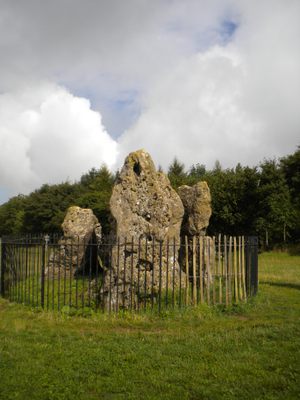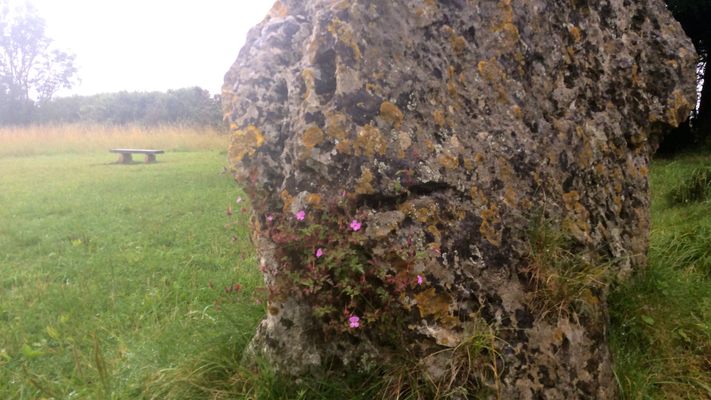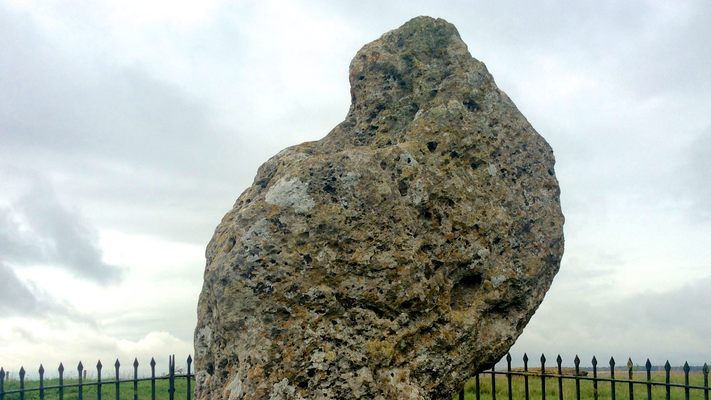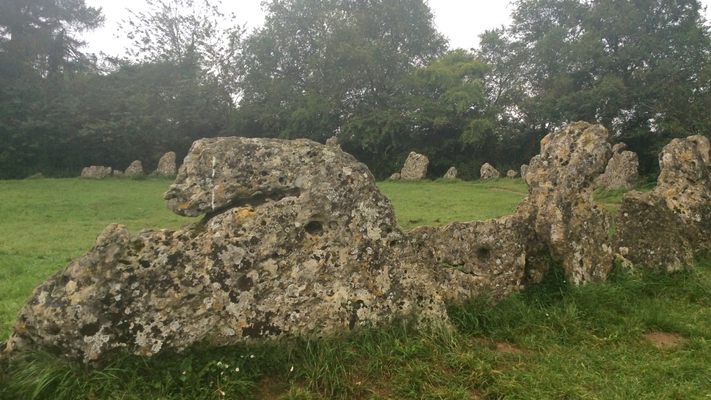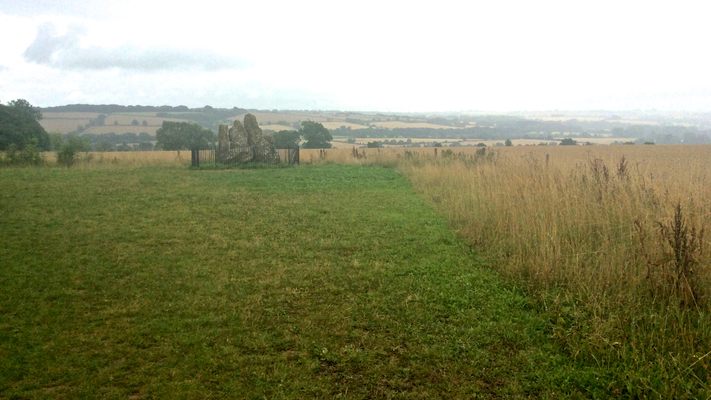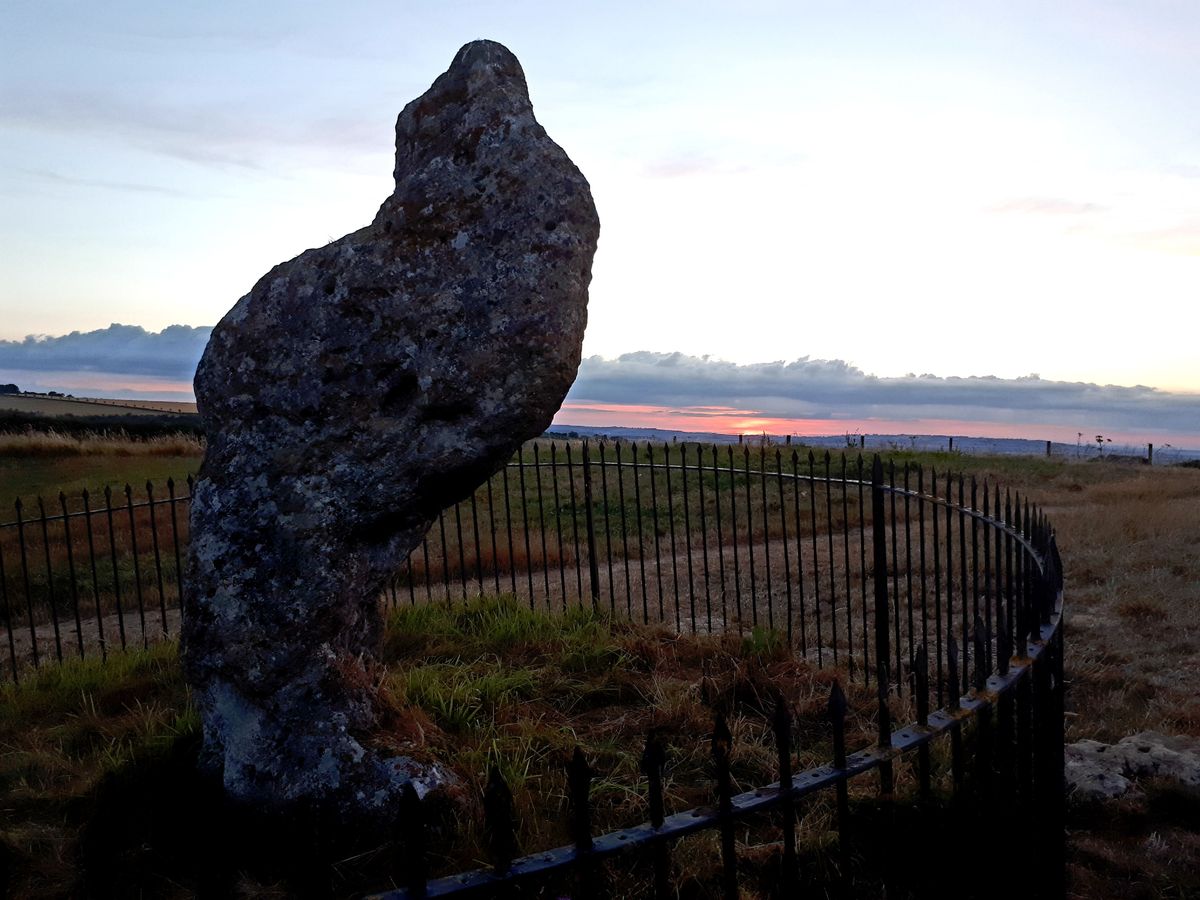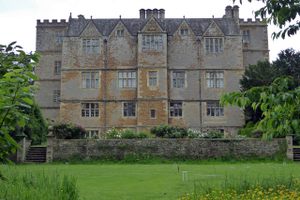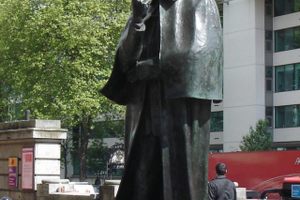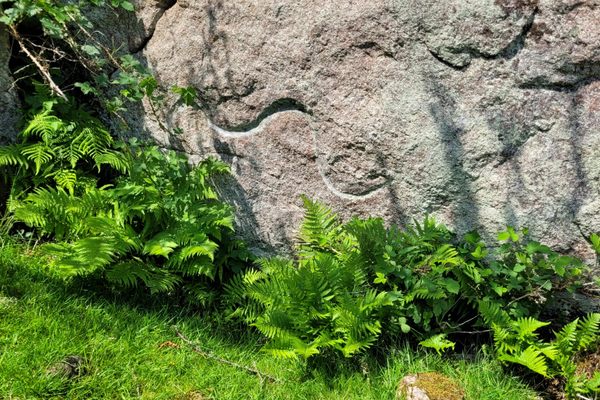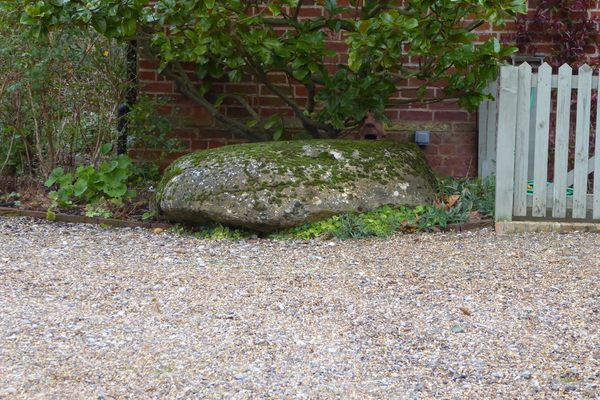About
The Rollright Stones, a trio of neolithic limestone monuments, were erected to mark ritual sites. But according to local legend, and the names of the specific sites themselves, the stones are actually the petrified bodies of a king and his men.
The largest of the sites is the King's Men, a tight circle of approximately 77 stones, over 100 feet in diameter. The stones in the circle vary in height and shape, but the circle itself is impressively uniform. Not far from the King's Men is a collapsed dolmen called the Whispering Knights. This ancient burial site is the oldest of the Rollright Stones, and was once a standing chamber. Today the capstone that was once the chamber's roof is on the ground beneath the other tipped stones. Finally, across the road from the Whispering Knights is the King Stone, a solitary megalith, made of a single crooked piece of limestone.
The true significance of the stones to the people who assembled them is now lost, although the dolmen may well have been a tomb, but there is a legend dating from at least the Tudor period that says the stones are a king and his army who were turned into stone by a local witch. According to a 17th century rhyme, the witch (specifically a historic figure witch known as Mother Shipton) tricked the invading king to into crossing her, so she turned his soldiers, who were sitting in a circle, his knights who were whispering among themselves, and the king himself to stone.
Other, creepier legends claim that the stones move at night, cannot be accurately counted, and, like many other British ruins or outstanding natural features, will helpfully whisper to young maidens the names of their future husbands.
Related Tags
Community Contributors
Added By
Published
September 11, 2015

